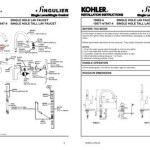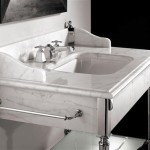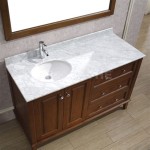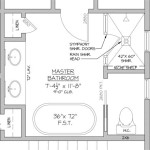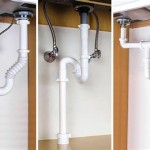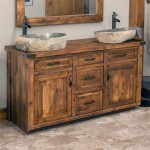How to Replace a Bathroom Tub Drain Stopper
A bathtub drain stopper is a simple yet essential part of your bathroom. It allows you to fill the tub with water for a relaxing soak and then easily drain it when you're finished. However, over time, these stoppers can become worn, damaged, or simply outdated. If you're experiencing problems with your tub drain stopper, such as leaking, sticking, or a slow drain, replacing it may be the solution. This guide will provide a step-by-step process for replacing your bathroom tub drain stopper.
Gather the Necessary Tools and Materials
Before you begin, make sure you have the following tools and materials on hand:
- New bathtub drain stopper
- Adjustable wrench
- Channel-lock pliers
- Flat-head screwdriver
- Phillips-head screwdriver
- Bucket or container
- Rag or towel
- Plumber's putty (optional)
The type of drain stopper you choose will depend on the design of your tub drain. There are several common types, including push-pull stoppers, lift-and-turn stoppers, and flip-flop stoppers. You can find replacement stoppers at most hardware stores or online retailers.
Removing the Old Drain Stopper
Once you have gathered your tools and materials, you can begin the replacement process.
-
Turn off the water supply.
Locate the shut-off valve for your bathtub and turn it off to prevent water from flowing into the tub during the replacement process. This valve is usually located behind the tub or on the wall near the tub. -
Drain the tub.
If there is any water remaining in the tub, drain it using the old drain stopper or by scooping it out with a bucket. Ensure the tub is completely empty. -
Remove the drain stopper.
The way you remove the drain stopper will depend on its type.Push-pull stoppers:
Simply pull the stopper up and out of the drain.Lift-and-turn stoppers:
Locate the lift-and-turn lever on the top of the stopper and turn it counterclockwise. The stopper should lift up and out of the drain.Flip-flop stoppers:
Locate the lever on the top of the stopper and use a flat-head screwdriver to pry it up and out of the drain opening.
-
Remove the drain strainer.
If your tub has a drain strainer covering the drain opening, you'll need to remove it. Most strainers are held in place by a threaded ring. Use a channel-lock pliers to grip the ring and twist it counterclockwise to loosen it. Once the ring is loose, you can remove the strainer. -
Prepare the new drain stopper.
Some new drain stoppers may require a few steps before installation.Push-pull stoppers:
There may be a rubber seal or gasket that needs to be placed on the bottom of the stopper.Lift-and-turn stoppers:
These often have a threaded rod that needs to be inserted through the stopper.Flip-flop stoppers:
Check if there is a rubber seal or gasket that needs to be placed on the bottom of the stopper.
-
Install the new drain stopper.
Place the new drain stopper in the drain opening.Push-pull stoppers:
They should simply fall into place in the drain opening.Lift-and-turn stoppers:
The threaded rod on the stopper will screw into the drain pipe, securing the stopper in place. Use an adjustable wrench to tighten the rod, but don't overtighten as it could damage the drain pipe.Flip-flop stoppers:
They will usually have a threaded ring around the base of the stopper. Screw the ring onto the drain tailpiece, ensuring it is tight but not overtightened. This will secure the stopper in place.
-
Install the drain strainer (if necessary).
If you removed a drain strainer, reinstall it by threading the ring back onto the drain tailpiece and tightening it by hand. -
Turn the water supply back on.
Once the new drain stopper is installed, turn the water supply back on and check for leaks. -
Test the new drain stopper.
Run the water in the tub and test the new drain stopper by opening and closing it a few times. Ensure it operates smoothly and doesn't leak. -
Leaking stopper:
If the drain stopper is leaking, it's likely that the stopper is not seated properly or the rubber seal is damaged. Remove the stopper, check the seal, and re-install the stopper. If the seal is damaged, replace it with a new one. -
Stopper doesn't seal:
If the stopper doesn't seal properly and leaks when it's closed, the drain pipe may be corroded or the stopper is the wrong size. Inspect the drain pipe and replace it if necessary. You may also need to try a different size stopper. -
Stopper gets stuck:
If the stopper gets stuck in the drain, it may be due to debris or corrosion build-up. Clean the drain thoroughly with a drain cleaner or a wire brush. If the stopper continues to get stuck, you may need to replace the drain pipe.
Installing the New Drain Stopper
Once the old drain stopper is removed, you can begin installing the new one.
Troubleshooting
If you encounter any problems while replacing your bathtub drain stopper, such as leaks or a stopper that doesn't operate properly, you may need to troubleshoot further. Here are a few common issues:
Replacing a bathtub drain stopper is a relatively simple task that can be done by most homeowners with basic plumbing skills. By following these steps, you can ensure that your bathtub drain is working correctly and providing you with a leak-free and enjoyable bathing experience.

Diy How To Replace Bathtub Drain Stopper Tutorial Clogged

How To Remove 6 Diffe Bath Drain Types

How To Remove A Bathtub Drain Forbes Home

Replace And Adjust Ing Bath Drain

Bathtub Drain Stopper Replacement

How To Replace Bathtub Drain Stopper With A Lift And Turn Diy

Bathroom Repair How To A Pop Up Tub Drain Stopper

How To Remove A Bathtub Drain Stopper Mr Rooter

Bathtub Drain Replacement How To Replace Or Install A Homeserve Usa

How To Replace A Bathtub Drain
Related Posts
